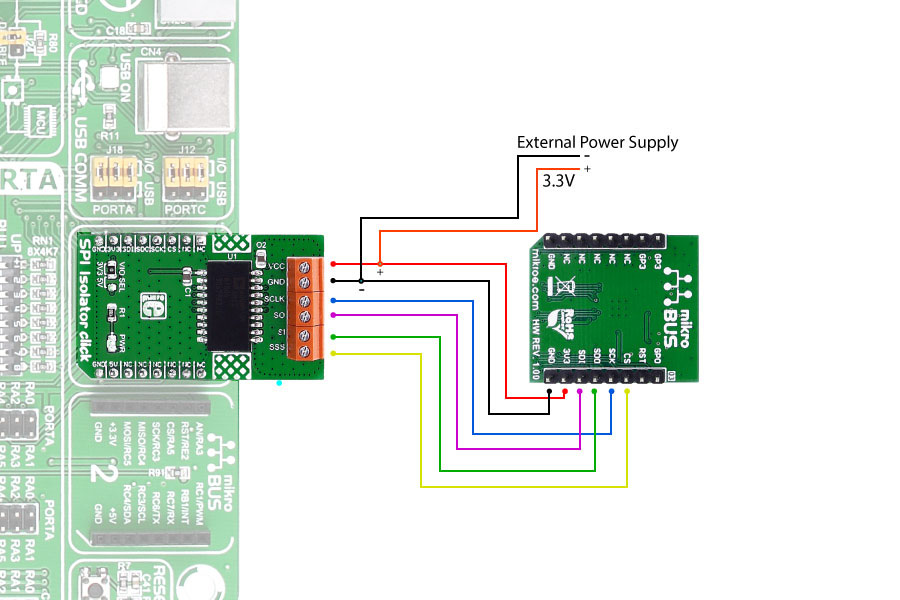SPI Isolator click
ADuM4154 features
The ADuM4154 has four high-speed channels. The first three channels, CLK, MI/SO, and MO/SI (the slash indicates the connection of the particular input and output channel across the isolator) are optimized for either low propagation delay in the B grade, or high noise immunity in the A grade.
Note: For more information about the A and B grade specifications see the datasheet.
Take a look at how the click can be connected in the picture below:
Note: For this example we used the ccRF 3 click and the EasyPIC v7 development board
SPI communication
SPI (Serial Peripheral Interface) communication is one of the most popularprotocols for sending data between microcontrollers and different peripherals.
It is a synchronous protocol; the clock signal is provided by the master.
For more information take a look at our Learn article about SPI communication.
Specifications
| Type | Isolator |
| Applications | Sensor isolation, industrial programmable logic controllers (PLCs) |
| MCU | ADuM4154 digital isolator optimized for SPI |
| Key Features | The module supports up to 17 MHz SPI clock speed, 4 high speed, low propagation delay, SPI signal isolation channels |
| Key Benefits | The ADuM4154 supports up to 4 slave devices |
| Interface | SPI |
| Input Voltage | 3.3V or 5V |
| Compatibility | mikroBUS |
| Click board size | M (42.9 x 25.4 mm) |
Pinout diagram
This table shows how the pinout on SPI Isolator click corresponds to the pinout on the mikroBUS™ socket (the latter shown in the two middle columns).
Downloads
mikroBUS™ Standard specificationLearn: SPI Bus
SPI Isolator click schematic
Enter the code in the box below:











